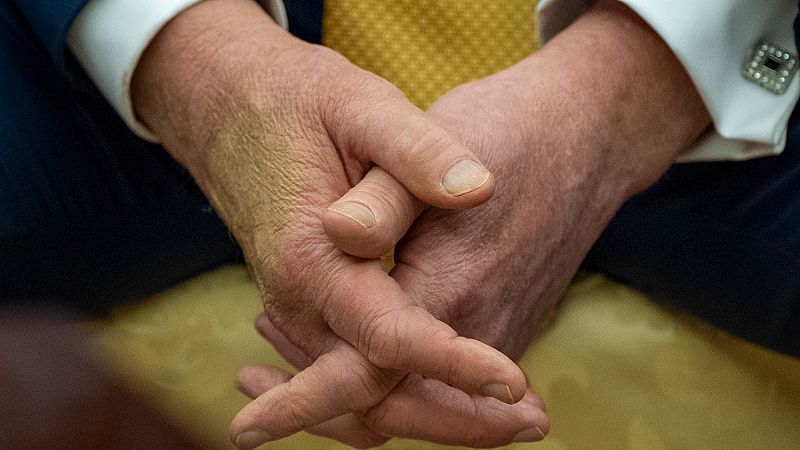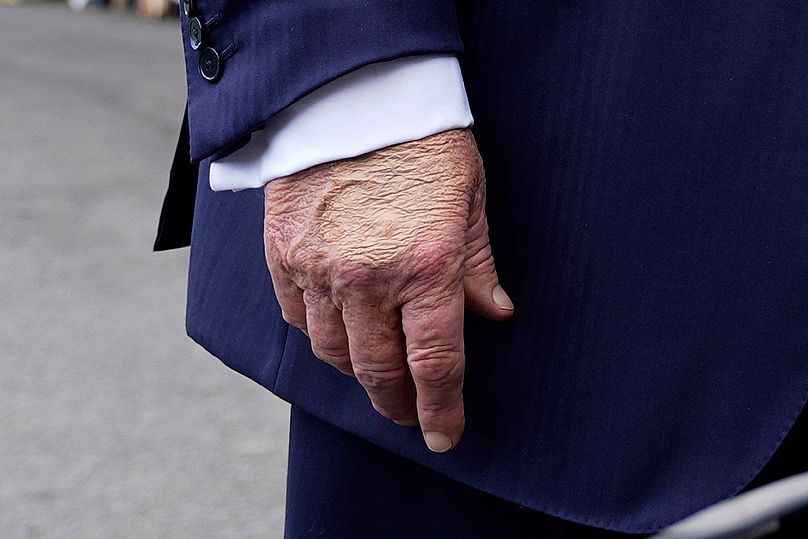
US President Donald Trump was found to have chronic venous insufficiency, a condition common in older adults that causes blood to pool in their veins, the White House said Thursday.
The diagnosis came after Trump was checked for a “mild swelling” in his lower legs, officials said.
The White House medical unit's testing, according to Press Secretary Karoline Leavitt, revealed that Trump had chronic venous insufficiency, a condition in which the tiny valves inside the veins that ordinarily assist in moving blood against gravity eventually lose their capacity to function properly.
The press secretary also addressed bruising on the back of Trump’s hand, seen in recent photos covered by makeup that was not an exact match to his skin tone, saying the bruising was “consistent” with irritation from his “frequent handshaking and the use of aspirin.”

According to Leavitt, the disclosure of Trump’s medical checkup was meant to dispel recent speculation about the 79-year-old president’s health.
Leavitt did not say when Trump, who is on aspirin medication to reduce the risk of heart attack and stroke, first noticed the swelling in his lower legs.
April's medical report did not show diagnosis
In April, Trump had a comprehensive physical exam with more than a dozen medical specialists, which saw the release of a three-page report that did not include a finding of chronic venous insufficiency.
At the time, Trump’s doctor, Sean Barbabella, determined that the president’s joints and muscles had a full range of motion, with normal blood flow and no swelling.
As part of the president’s routine medical care and out of an “abundance of caution,” she said Trump had a “comprehensive exam” that included vascular, lower extremity, and ultrasound testing.
Leavitt, reading a letter from Barbabella, noted that chronic venous insufficiency is a benign condition that is common in people over age 70.
She sought to dispel concerns about Trump's health, saying the president's tests revealed no evidence of deep vein thrombosis, a more serious medical condition in which a blood clot forms in one or more of the deep veins in the body, usually in the legs.
There was no evidence of arterial disease, Leavitt added.
Condition not causing Trump discomfort
According to Leavitt, Trump's chronic venous insufficiency condition wasn’t causing the president any discomfort, though she wouldn’t discuss how he was treating the condition.
Leavitt instead suggested those details would be in the doctor’s letter, which was later released to the public. But the letter was the same as what she read and did not include any additional details.
There is no cure for chronic venous insufficiency, according to Dr. Anahita Dua, a vascular surgeon at Mass General Brigham, Massachusetts.
“The vast majority of people, probably including our president, have a mild to moderate form of it,” Dua, who has never treated Trump, said.
But according to the letter Leavitt read out, people are often advised to lose weight, walk for exercise, and elevate their legs periodically, and some may be advised to wear compression stockings.
Complications from severe cases of the condition over time may include ulcers, which are sores on the lower legs, with blood clots as one cause, something Leavitt said was ruled out for Trump.







